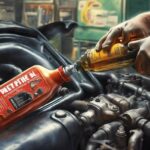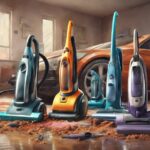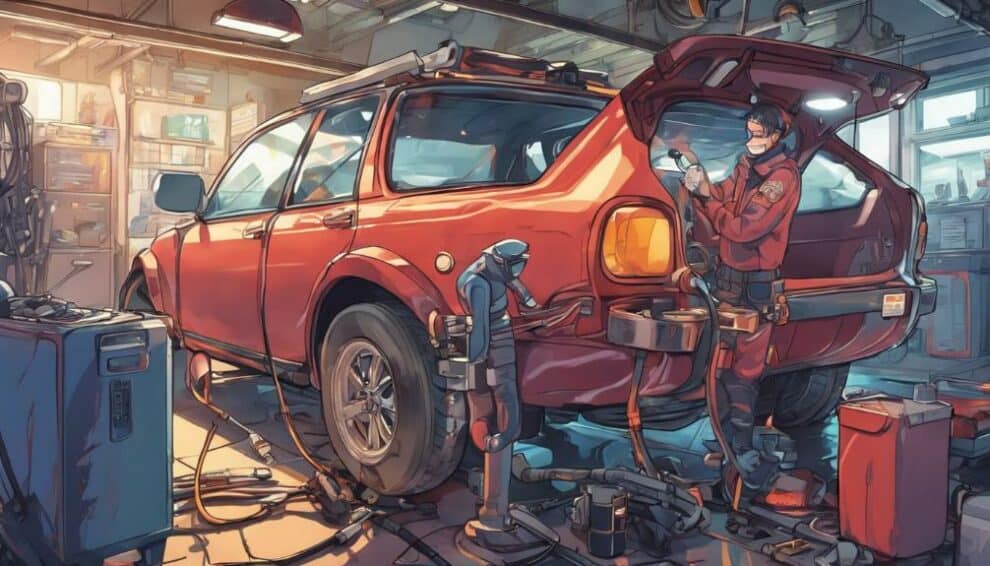When your check engine light pops on and throws out a P0442 code, it’s telling you there’s a small leak in the evaporative emission control system. Though it might not sound like a big deal, these little leaks can affect how your car runs and its impact on the environment.
Fixing them helps keep your car running smoothly and cuts down on pollution.
Let’s dive into how you can track down and fix these leaks, making your car happier and the planet a bit greener.
Understanding the P0442 Trouble Code
To understand the P0442 trouble code, you must first grasp its significance in diagnosing issues within the evaporative emission control system. The P0442 trouble code indicates a small leak in the evaporative emission control system.
This system is designed to prevent harmful fuel vapors from escaping into the atmosphere. When the code appears, it means that the evaporative emissions system is detecting a leak that’s larger than 0.040 inches in the system.
Common misconceptions about the P0442 trouble code include attributing it to a loose gas cap. While a loose gas cap can sometimes trigger this code, there are various other potential causes such as a cracked or damaged EVAP hose, a faulty purge valve, or a leak in the charcoal canister.
It’s essential to conduct a thorough inspection of the entire evaporative emission control system to pinpoint the exact source of the leak triggering the P0442 trouble code.
Remember, addressing this code promptly is crucial to maintaining the efficiency and environmental friendliness of your vehicle.
Causes of Small Leaks in EVAP System
Common causes of small leaks in the EVAP system include deteriorated rubber hoses, damaged seals, and faulty purge valves.
- Common sources:
- Deteriorated Rubber Hoses: Over time, the rubber hoses in the EVAP system can degrade due to exposure to heat, chemicals, and environmental factors, leading to cracks and leaks.
- Damaged Seals: Seals play a critical role in maintaining airtight connections within the EVAP system. Any damage or wear to these seals can result in small leaks.
- Faulty Purge Valves: The purge valve is responsible for controlling the flow of fuel vapors from the charcoal canister to the engine. If the valve malfunctions or gets stuck open, it can cause leaks in the system.
- Prevention methods:
- Regular Inspection: Periodic visual inspections of rubber hoses and seals can help detect early signs of deterioration and prevent leaks.
- Proper Maintenance: Following the manufacturer’s recommended maintenance schedule, including replacing worn-out components, can help prevent small leaks.
- Avoid Harsh Conditions: Protecting the EVAP system from extreme temperatures and harsh chemicals can extend the lifespan of hoses and seals.
Diagnosing and Locating the Leak
When diagnosing and locating leaks in the EVAP system, start by conducting a systematic visual inspection of all components for signs of damage or wear.
Look for cracked hoses, loose or damaged gas caps, and corrosion on metal fittings. Utilize diagnostic tools such as smoke machines or gas analyzers to pinpoint the exact location of the leak.
Smoke machines introduce a non-toxic smoke into the system, making leaks visible as smoke escapes from the damaged area.
Gas analyzers can detect hydrocarbons present in the system, indicating a leak. Utilize locating techniques such as listening for hissing sounds that may indicate a leak or feeling for air blowing out of a crack with your hand. By combining visual inspections with diagnostic tools and techniques, you can efficiently identify and locate leaks in the EVAP system.
| Diagnostic Tools | Locating Techniques | Components to Inspect |
|---|---|---|
| Smoke Machines | Listening for hissing sounds | Hoses |
| Gas Analyzers | Feeling for air blowing out of a crack | Gas Caps |
| Metal Fittings |
Repairing Small Leaks in EVAP System
Consider employing the following step-by-step process to effectively repair small leaks in the EVAP system:
- Leak Detection: Begin by conducting a thorough inspection of the EVAP system components, including the hoses, canister, and connections, to identify the source of the leak. Utilize a smoke machine to pressurize the system and visually spot any smoke escaping from the leak point.
- EVAP System Repair: Once the leak is located, proceed with repairing or replacing the faulty component. Common repair actions include fixing or replacing damaged hoses, tightening loose connections, or replacing a faulty purge valve. Ensure that all repairs are done meticulously to prevent any future leaks.
- Verification: After completing the repairs, perform a final leak detection test using a smoke machine or other appropriate methods to confirm that the issue has been successfully resolved. Verify that the EVAP system is now sealed properly to prevent any further leaks and ensure optimal performance.
Ensuring Emission Compliance
To ensure emission compliance, meticulously follow the recommended maintenance schedule provided by the manufacturer for your vehicle’s EVAP system.
Compliance protocols and regulatory standards must be adhered to for the proper functioning of the EVAP system. Here is a table outlining the key components of maintaining emission compliance:
| Maintenance Task | Frequency | Importance |
|---|---|---|
| Check Gas Cap Seal | Every 6 months | Proper seal prevents vapor leaks |
| Inspect EVAP Lines | Annually | Ensures no cracks or damage in the lines |
| Test EVAP System | Every 2 years | Validates system’s ability to contain emissions |
As an Amazon Associate we earn from qualifying purchases.








